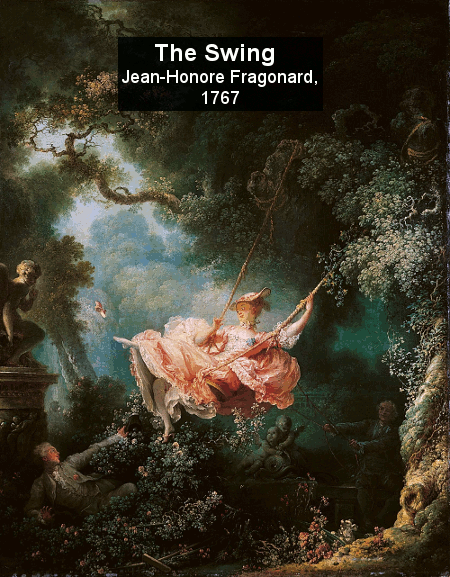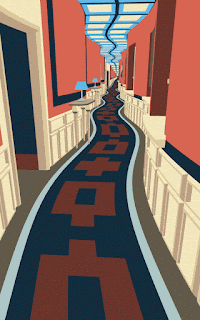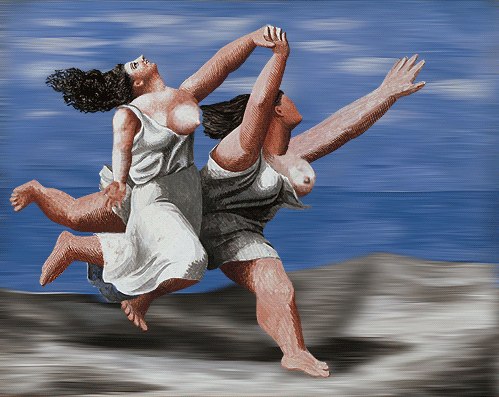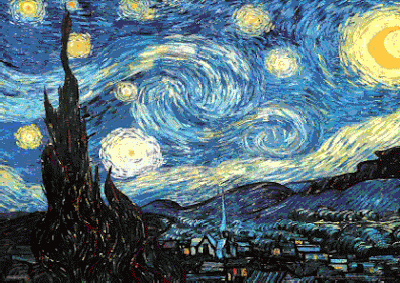 |
| Angel Triptych, Donald Zolan...always sweet little girls. |
 |
Heilige Schutzengel
(Holy Guardian Angel)
by Lindberg. |
As a small child there hung in my bedroom a cheap reproduction of a painting by an artist named Lindberg. There seems to be no record of whether that's his first or last name or what either might have been, although judging by the imitations and variations I've found, it's apparent the work remains popular even today. The painting depicts a lovely winged female figure (right) watching over two young souls making their way across a rather rickety bridge. There's little doubt as to the country of origin, given the title, Heilige Schutzengel, (Holy Guardian Angel), which is obviously German. In any case, that was what passed for children's art a century or more ago. Today, we still find angelic beings in children's art but they've changed a little, usually taking the form of that which art experts refer to as puti. They came out of the Renaissance, direct descendants of the Roman Cupid and the Greek Eros. Today's children's angels, whether of the guardian type or not, usually resemble the work of Arizona artist, Donald Zolan, as seen in his Angel Triptych (top). Strangely enough, none of these depictions are scripturally accurate. In the Bible, angels are always men.
 |
| Donald Zolan in his studio, ca. 2006. |
This is not so much about the work of Donald Zolan as it is about the nature of children's art today. In fact, when you go in search of children's art you find ten times more work by children than for children. The prevailing attitude seems to be if kids want art to decorate their rooms, they can just make it themselves. Of course, art intended for children is actually aimed at parents. Children don't buy such work, their parents do (usually their mothers). Having said that, the offspring, even at a fairly young age, still have no small amount of input into the buying decision. I've chosen to highlight Zolan's work simply because it is so typical of today's "mainstream" art for children. Moreover, Zolan was at it for more than fifty years, (he died in 2009 at the age of seventy-one) so he probably knew what he was doing.
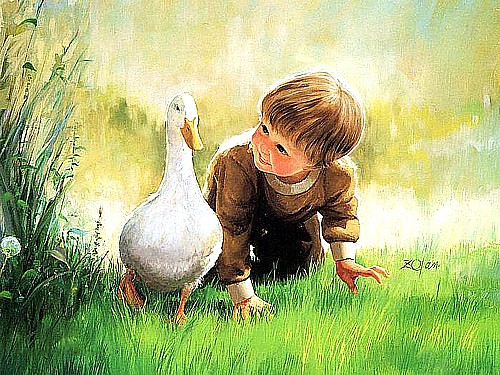 |
Untitled (as far as I can tell), Donald Zolan. I'd call it
Wild Goose Chase, but it might be a duck, and anyway, it's not wild. |
Born in 1937 with a family legacy of five generations of artists and sculptors, Donald Zolan grew up in Brookfield, Illinois. His middle-class parents, according to his website, "...embodied the values of the Heartland--honesty, humility, and straightforwardness." That's probably true, there was a lot of that sort of thing going around at the time. His paintings, almost exclusively of small children, seem to confirm those character traits. What he captured in his paintings was the pure, honest, and open expression of his heart.
 |
| 'Twas the Night Before Christmas, Donald Zolan |
Something of a child prodigy, Zolan began drawing and painting at the age of three, though it was another ten years before he won his first scholarship in oils to the Art Institute of Chicago. Upon graduation from high school, he won a full scholarship to the American Academy of Fine Art in Chicago. Once more he was a fast learner. He completed the Academy’s four-year program in just two years. From there, Zolan apprenticed under Haddon Sundblom, the well-known illustrator of the Coca Cola Santa Claus. Zolan's Christmas paintings bear the unmistakable marks of Sunblom's influence (above). Later, Zolan attended the Arts Students League in New York City.
 |
| 21st Century Children's art |
Zolan pursued a fine arts career exhibiting and selling his oil paintings at shows and museums throughout North America, Europe, United Kingdom, and Japan. He won numerous awards including Best of Show at the Salmagundi Club in New York. His success led to the opening of the Zolan Gallery on Nantucket Island. By the mid 1970’s, as Zolan’s reputation in the fine art world flourishing, his portrait commissions expanding to include political leaders, writers, religious figures, astronauts, and industrialists from around the world. But Zolan’s first love was painting children. By that time also, he had developed a fresh new style in children's paintings, which launched his career into the collectibles and licensing world. His work displayed a prodigious talent at portraying the joyfulness, innocence, tenderness and wide eyed wonder of early childhood, which propelled him to the top as his works commanded some of the highest secondary market values at the time.
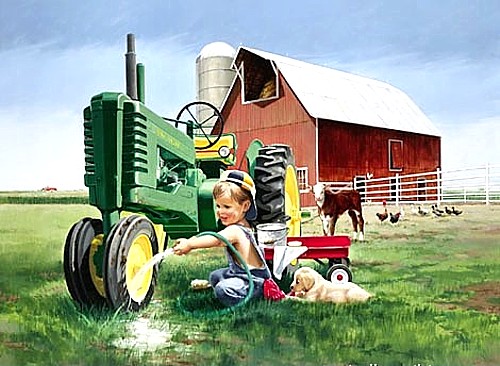 |
| Zolan's kids became the faces of a whole new generation of farmers. |
Zolan had the ability to constantly adapt the artwork to the changing times yet always keeping within his classical style. His subject matter became a natural to co-brand with some of America’s greatest trademarks. In 1996, Zolan’s nostalgic portrayal of children on the farm led to a mingling with John Deere tractors his first licensing success. In the last decade of his life, Zolan’s work was also branded with Coleman, New York Yankees, Radio Flyer, International Harvester, and Collegiate. Today, Zolan’s artwork is licensed to 30 multinational companies in North America, Europe and Russia.
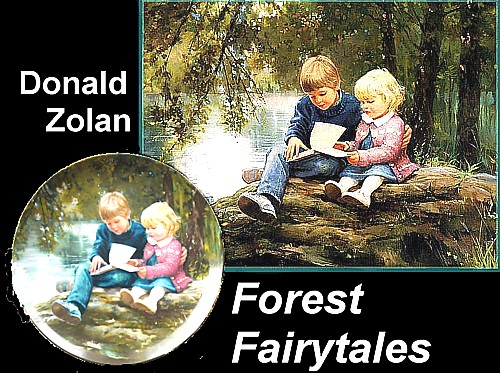 |
| Children's art today--prints and plates |
As Zolan’s childhood depictions came to grace collectible plates, prints, figurines, children’s books, and other licensed products over some thirty years, expanded, so did his generosity in directly helping children and those in need. Whether visiting children’s hospitals; giving money directly to struggling families; donating artworks to nursing homes, children’s homes, and hospitals; or simply helping aspiring artists to start their careers, Zolan always gave from the heart and anonymously. Donald Zolan leaves behind an enormous legacy of artwork with over 200 oil paintings in the collection that will continue to be licensed nationally and internationally by his wife, Jennifer. Zolan’s sudden death did not allow him an opportunity to fulfill all of his dreams, but his legacy will go on, with plans to establish a children’s museum and programs to help young, needy and aspiring artists reach their artistic dreams. And that's where Children's art is as of today.
 |
Rainy Day Pals, Donald Zolan
(GIF by Jim Lane). |











































